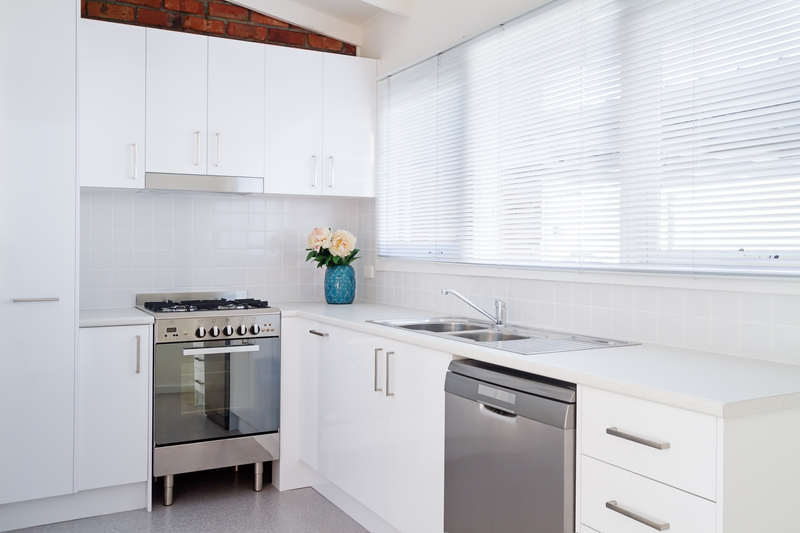Top Strategies for Packing Effectively During a House Move
Posted on 21/05/2025
Top Strategies for Packing Effectively During a House Move
Moving house can be both an exciting adventure and a logistical challenge. Whether you're relocating across town or to a new city, packing effectively is one of the most critical components for a successful and stress-free move. In this article, we'll cover comprehensive, expert strategies for efficient packing during a residential move so you can streamline your transition and settle in with ease.

Why Is Effective Packing Important During a House Move?
Mastering house moving packing strategies ensures that your belongings arrive intact and accessible, significantly reducing the risk of damage, loss, or confusion. Efficient packing also saves time, minimizes moving expenses, and helps maintain peace of mind throughout the process.
The Consequences of Poor Packing
- Broken or damaged goods
- Higher moving costs due to excess boxes or truck space
- Increased risk of losing valuables
- Longer unpacking times and increased frustration
To avoid these pitfalls, use the best packing techniques for moving house detailed below.
Preparation: The Foundation of Effective Packing
1. Create a Moving Checklist
A well-organized checklist acts as your roadmap for the entire process. List tasks by week or day to keep your packing project on track and to avoid last-minute chaos. Include:
- Booking movers or a rental truck
- Gathering packing materials
- Notifying utilities and service providers
- Labeling and inventorying boxes
2. Secure Proper Packing Supplies
Invest in high-quality materials to pack effectively for a move. You'll need:
- Sturdy boxes in various sizes
- Packing tape and a dispenser
- Bubble wrap, packing paper, or foam peanuts
- Permanent markers and colored labels
- Stretch wrap for furniture and large items
- Plastic zip bags for small parts (like screws or remotes)
3. Declutter Before You Pack
Allow ample time to sort all household items. Packing less means carrying less and can even save on moving costs. Sort belongings into categories:
- Keep: Essential and frequently-used items
- Donate or Sell: Unused, unwanted, or duplicate items
- Recycle or Dispose: Broken, expired, or unusable goods
Tip: Donate usable items to local charities or sell them online for extra cash!
Proven Strategies for Efficient Packing During a House Move
1. Start Early and Tackle One Room at a Time
Begin packing weeks ahead of moving day, starting with seldom-used rooms or storage spaces. Break the process into manageable sections:
- Pack guest rooms, basements, or attics first
- Leave daily-use areas like the kitchen and master bedroom for last
This room-by-room approach keeps your household functional and organized until the final days before your move.
2. Use a Systematic Labeling Method
Labeling is a top tip for an organized house moving packing strategy. After sealing each box, clearly write:
- The room it belongs in at the new house
- A unique identifying number or code
- A brief description of contents
Use color-coded labels or tape for quick identification on moving day, and keep a master inventory sheet or spreadsheet.
3. Protect Fragile Items With Extra Care
Breakables need special treatment. For the safe packing of fragile goods during your move:- Wrap each piece in bubble wrap or packing paper individually
- Fill box spaces with protective padding
- Label boxes as FRAGILE and indicate which side should face up
- Pack heavy items at the bottom, lighter ones above
- Use specialty dish packs and glassware dividers for kitchen items
4. Optimize Box Sizes and Weight
Choose the right box for the right job! Overfilled or underfilled boxes can lead to hassle and damage. Remember:
- Heavy items, like books, go in small boxes
- Lighter items, such as linens or pillows, suit large boxes
- Avoid making any box too heavy (ideally, keep under 50 lbs/23kg)
This packing strategy for a house move ensures boxes are easier to lift, stack, and transport safely.
5. Disassemble Furniture and Organize Small Parts
For bulky or modular furniture, disassemble pieces when possible. Keep all screws, bolts, and hardware in labeled zip bags, and tape these to the relevant piece of furniture. Take photos of furniture before disassembly to guide reassembly at your new home.
6. Make Use of Every Space
Maximize your packing efficiency. Pack soft goods inside suitcases, laundry baskets, and even pots or small appliances (with protective padding). Shoes can be filled with socks, and tote bags can carry toiletries or electronics.
Expert Packing Tips for Specialized Items
Packing Electronics
- Save original boxes if possible
- Use anti-static bubble wrap for screens and delicate parts
- Take photos of cable setups for easy reassembly
- Label all cords and accessories
Packing Valuable Documents and Jewels
- Carry passports, wills, and financial documents yourself
- Use a lockbox or fireproof portable safe
- Keep valuable jewelry in a travel case on your person
Packing Clothes and Linens
- Use wardrobe boxes for hanging clothes
- Roll instead of fold for more space and fewer wrinkles
- Pack off-season clothes first
- Protect bed linens in clear bags for easy identification after the move
Packing Artwork and Mirrors
- Wrap frames with glass in bubble wrap and cardboard corners
- Use mirror boxes or create custom-sized containers
- Transport artwork upright whenever possible
Essential Hacks for a Smooth Packing Experience
1. Assemble an Essentials Box
Pack an essentials box or bag with everything you'll need for the first day and night at your new home. Include:
- Toiletries
- Change of clothes
- Phone chargers
- Snacks, basic kitchenware, and bottled water
- Bed linens and towels
- Important documents and medications
Keep this box separate and move it yourself for easy access!
2. Don't Overpack Each Box
A common mistake is cramming too much into one box. Stick to weight guidelines and reinforce box bottoms with extra tape to prevent breakage during the move.
3. Use Plastic Wrap and Garbage Bags for Spillables
Prevent accidents by using plastic wrap on open shampoo bottles or cleaning supplies. Place bottles in sealed bags before packing to contain leaks or spills.
4. Take Photos of Complex Setups
Before unplugging electronics, disassembling furniture, or taking down shelves, snap quick photos with your phone. They'll provide a step-by-step guide when you're setting up your new home.
What to Do on Moving Day
Final Walkthrough
Before the movers depart, do a thorough check of all rooms, closets, and storage spaces. Make sure:
- No boxes or personal items are left behind
- Nothings has been accidentally loaded that should remain
- Important items (documents, valuables) are with you
Direct Boxes to the Right Rooms
Color-coded labels and clear descriptions will pay off as movers carry each box directly to its specified room, making unpacking much less daunting.

Settling In: Efficient Unpacking Tips
Just as systematic packing for a home relocation is important, a methodical unpacking process ensures you aren't overwhelmed in your new space.
- Start with your essentials box and set up beds and the kitchen first
- Refer to your inventory and labels for efficient unpacking
- Finish one room at a time to maintain order
- Save non-urgent areas (decorations or storage spaces) for last
Conclusion: Master Your Next Move with Expert Packing Strategies
Effective packing during a house move is not just about putting things in boxes--it's about careful planning, organization, and using smart techniques to protect your belongings and your sanity. By following these comprehensive packing tips for moving house, you'll ensure your relocation is streamlined, cost-effective, and as stress-free as possible.
Remember: Start early, stay organized, label everything, protect fragile items, and keep what you need most accessible. With these strategies for packing efficiently during a home move, you're well on your way to settling into your new home with ease!
If you've found these tips helpful, share them with friends or family who are preparing to move, and happy packing!



